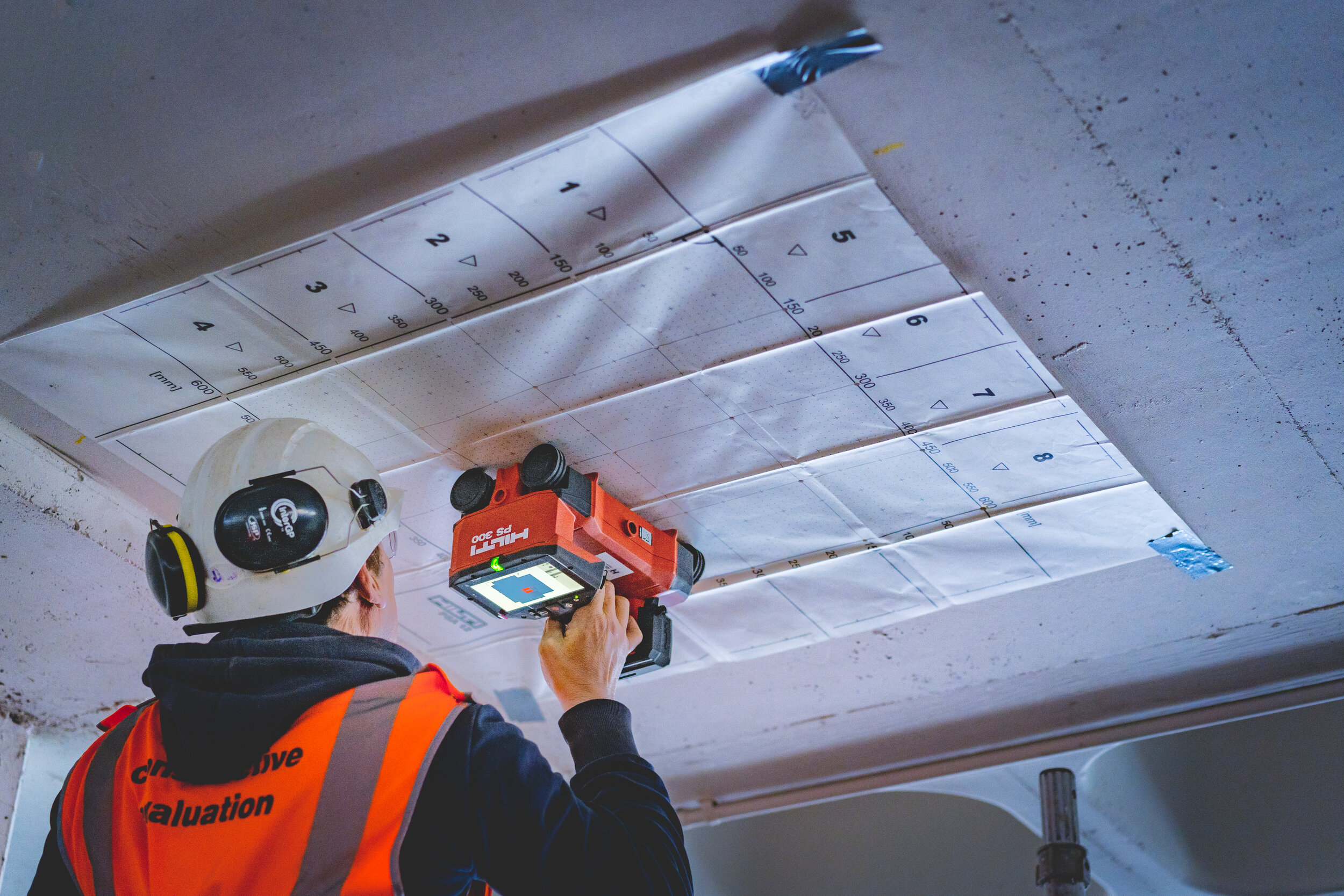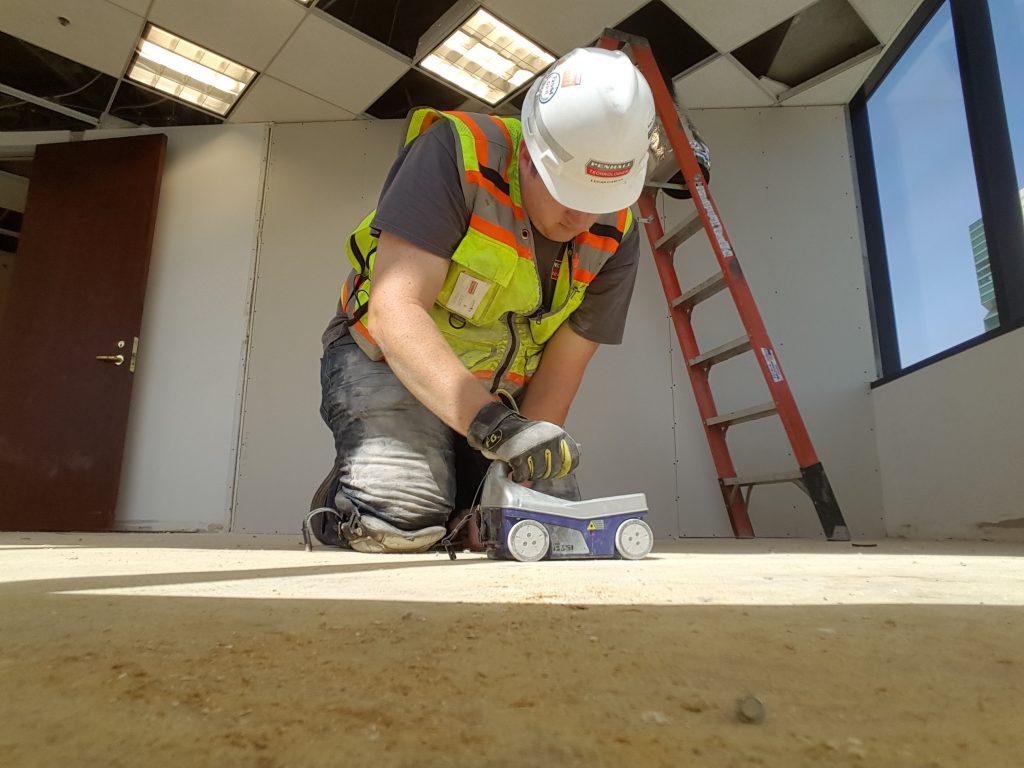RainierGPR Concrete Scanning: Trick Insights for Successful Jobs
RainierGPR Concrete Scanning: Trick Insights for Successful Jobs
Blog Article
Unlock the Trick Advantages of Concrete Scanning for Streamlined Workflow and Cost Savings
In the realm of building and construction and framework advancement, the usage of concrete scanning innovation has actually transformed project management practices. By incorporating innovative scanning methods, business can attain exceptional accuracy and efficiency in their operations. From enhancing task preparation and implementation to reducing disruptions and downtime, the benefits of concrete scanning are multifaceted. It is not merely the surface-level advantages that make this innovation invaluable. The real value hinges on the nuanced means in which concrete scanning can transform the landscape of construction jobs, bring about streamlined procedures and substantial expense financial savings.
Boosted Job Preparation and Execution
Boosted project preparation and execution are essential components in the successful execution of concrete scanning technology within building projects. By integrating concrete scanning into the initial task preparing stage, construction groups can precisely recognize the area of rebar, post-tension cables, and other embedded items within concrete structures. This info allows for more exact task organizing, lowering the risk of pricey mistakes or hold-ups during the construction procedure.
Furthermore, with concrete scanning modern technology, project managers can create detailed 3D models of the subsurface problems before any kind of exploration or cutting occurs. This degree of insight makes it possible for professionals to make enlightened decisions and changes to their building and construction plans, resulting in boosted task performance and general high quality.
Basically, the combination of concrete scanning enhances task planning by providing essential information that enhances decision-making processes, decreases rework, and ensures that building and construction projects are completed on time and within budget plan. By leveraging this sophisticated innovation, construction groups can streamline operations, alleviate dangers, and deliver effective end results for their customers.

Raised Precision in Object Discovery
By integrating concrete scanning innovation right into building and construction projects, the emphasis shifts in the direction of accomplishing increased precision in item detection, especially in identifying rebar, post-tension cable televisions, and other ingrained items within concrete frameworks. By specifically recognizing embedded things, building groups can stay clear of costly mistakes, revamp, and job hold-ups.
Concrete scanning modern technology makes it possible for building specialists to envision the inner composition of concrete frameworks in real-time, offering thorough insights into the visibility and positioning of things within the concrete. This level of accuracy not just boosts project preparation and execution yet additionally reduces the risk of accidents and architectural failings. With enhanced object detection capacities, building and construction teams can work more successfully, decrease material wastage, and eventually deliver high-quality jobs within budget plan and routine restrictions.
Improved Safety and Danger Reduction

Furthermore, concrete scanning help in making sure the architectural stability of buildings and infrastructure by identifying voids, delamination, or other problems over at this website that can endanger the safety and security of the project. By dealing with these problems early on, building groups can take the required corrective actions to strengthen the concrete and protect against future problems. Inevitably, the boosted security and risk mitigation supplied by concrete scanning modern technology not just safeguard the well-being of employees and the check out this site general public however likewise add to the general success and longevity of building and construction jobs.
Time Effectiveness and Expense Cost Savings
Carrying out concrete scanning modern technology in building projects can cause significant time performance and price savings. By utilizing advanced scanning tools such as ground-penetrating radar (GPR) and electro-magnetic induction, building teams can accurately find rebar, post-tension cable televisions, and various other subsurface elements without the need for harmful methods. This precise information enables streamlined task preparation and execution, decreasing the time spent on unexpected delays because of hitting unidentified objects during excavation or drilling.
In addition, the capacity to recognize potential threats beneath the surface ahead of time can prevent pricey damages to devices and injuries to workers, even more adding to overall price savings. In addition, the performance got from utilizing concrete scanning technology translates into faster job conclusion times, making it possible for construction firms to handle even more projects and increase their productivity.
Minimized Disturbances and Downtime
The use of concrete scanning technology not just enhances time effectiveness and cost financial savings in construction jobs yet likewise plays a vital function in lessening interruptions and downtime. By using advanced scanning techniques such as Ground Passing Through Radar (GPR) or Concrete X-ray, building teams can properly situate rebar, post-tension cords, avenues, and various other subsurface right here frameworks within concrete structures without the need for damaging investigatory approaches (RainierGPR Concrete Scanning). This accuracy in finding important parts helps protect against unintended problems during exploration, cutting, or coring tasks, thus considerably lowering the risk of unforeseen downtime because of fixings or remodel
Additionally, concrete scanning enables job supervisors to intend construction tasks more properly by identifying possible barriers in advance. Eventually, the reduced disturbances and downtime promoted by concrete scanning modern technology lead to improved project timelines, enhanced performance, and overall cost financial savings for construction projects.
Conclusion
To conclude, concrete scanning provides numerous benefits for structured procedures and cost savings in different sectors - RainierGPR Concrete Scanning. By improving task planning and implementation, increasing precision in item discovery, improving safety and risk reduction, saving time and prices, and decreasing disruptions and downtime, companies can optimize their processes and accomplish better effectiveness. Overall, including concrete scanning into procedures can lead to improved results and a more productive job environment
By including concrete scanning right into the preliminary job planning stage, construction groups can properly recognize the location of rebar, post-tension cables, and various other ingrained objects within concrete structures.By incorporating concrete scanning innovation right into building and construction jobs, the focus shifts towards attaining boosted accuracy in object discovery, especially in recognizing rebar, post-tension cords, and various other embedded things within concrete structures.Concrete scanning innovation makes it possible for building and construction specialists to visualize the inner make-up of concrete structures in real-time, supplying comprehensive insights into the visibility and positioning of objects within the concrete. By utilizing sophisticated scanning approaches such as Ground Permeating Radar (GPR) or Concrete X-ray, building groups can precisely find rebar, post-tension cables, conduits, and other subsurface structures within concrete structures without the requirement for damaging investigatory methods. Inevitably, the lessened interruptions and downtime promoted by concrete scanning technology lead to improved project timelines, boosted productivity, and total expense financial savings for building tasks.
Report this page